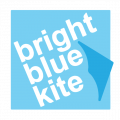Hashtags are an essential part of a content and social strategy, enabling your content and feeds to be searched and found by people ready to engage. They are so all-pervasive that commentators can use the phrase ‘generation hashtag’ and be understood. They appear in song lyrics and everyday speech and major news events are built on social media using hashtags. So how can you make them work for you?
The rise of the hashtag:
Today, it is difficult to understand the impact Twitter made when it launched, from zero tweets per day in 2006 to just under 50m tweets per day by 2010. In Sept 2007, ‘tracking’ was launched allowing users to follow topics and this eventually became the all-powerful hashtag. Twitter can be searched using terms in the same way as Google but search results are much more focused using a hashtag.
Twitter had no monopoly on the hashtag and when Instagram launched in 2010, reaching a million users in just 2 months, hashtags were central to its success. Pinterest soon followed suit and Facebook belatedly came to the hashtag party but hashtags do not dominate FB in the way they do Twitter, Pinterest and Instagram. Even LinkedIn has begun encouraging users to tag posts with hashtags and hashtag search on LI does work. Snapchat is not currently searchable so hashtags are not relevant to this platform.
What hashtags should you use?
The purpose of a hashtag is give your content a signpost that makes it findable.
First, you need a keyword list. Check this post out. Then you should carefully select words likely to be searched by your priority audiences. Your chosen hashtags must come from your keyword list. Consistency is absolutely vital and you should create a list of no more than 5 or 6 ‘evergreen’ hashtags.
If you work in a major market sector, some of the hashtags you choose can be generic and this will help spread your net wide but you can and should refine them with more specific terms. So perhaps #carinsurance with #newdriver and #offer.
Hashtags can be used by anyone, even brand names cannot be ‘owned’ so you should always check what kind of use is already being made of the hashtags you’ve chosen. There are obvious benefits to using existing hashtags as this implies current interest. The inability to ‘own’ a hashtag also means they can be taken over, as companies like McDonalds and Walkers Crisps have discovered to their cost when their campaign hashtags were used to post negative comment.
Alongside your ‘evergreen’ hashtags, you need to develop specific hashtags for campaigns, events or properties like TV/radio stations and shows, books or movies. If relevant, individual people or characters can also benefit from a specific hashtag.
Effective hashtag use:
Do not post on Twitter, Pinterest or Instagram without using an evergreen or specific hashtag. I recommend a maximum of 5 hashtags per post. Relevance is key. Don’t overuse hashtags and certainly don’t create entire posts out of hashtags. People are searching to find something they’re interested in and won’t appreciate posts made entirely of hashtags.
Hashtags should be as short as possible as social platforms have character limits. Shorter hashtags are also less likely to be misspelled. As hashtags are always used without punctuation, check your chosen hashtags for alternate and inappropriate meanings. #edsheeranalbumparty was an actual hashtag!
Hashtags not only bring attention to your content but if people then see good, relevant content in your feeds, they will also follow you. Don’t forget that Twitter is the only platform whose content is indexed by Google so you’ll get a wider search benefit using hashtags on Twitter.
There is a belief that an effective way of using hashtags on Instagram is to post something and then add your hashtags to the first comment box for the post. The principal benefit seems to be adding as many hashtags as you like but you’d have to wonder whether anyone has enough relevant hashtags to make this tactic effective?
Tracking hashtag success:
Initially, you will see immediate response through likes, retweets, repins and new followers. However, you must measure hashtags against your organisational goals, not against metrics which may be easy to influence but actually don’t contribute to your success. Set up your content and social structure to deliver organisational goals and establish metrics which actually measure whether or not they’re being achieved.
Deployed skilfully, hashtags are a powerful content and social tool that can increase engagement and build social audiences. Choose carefully, use often and track the results!
